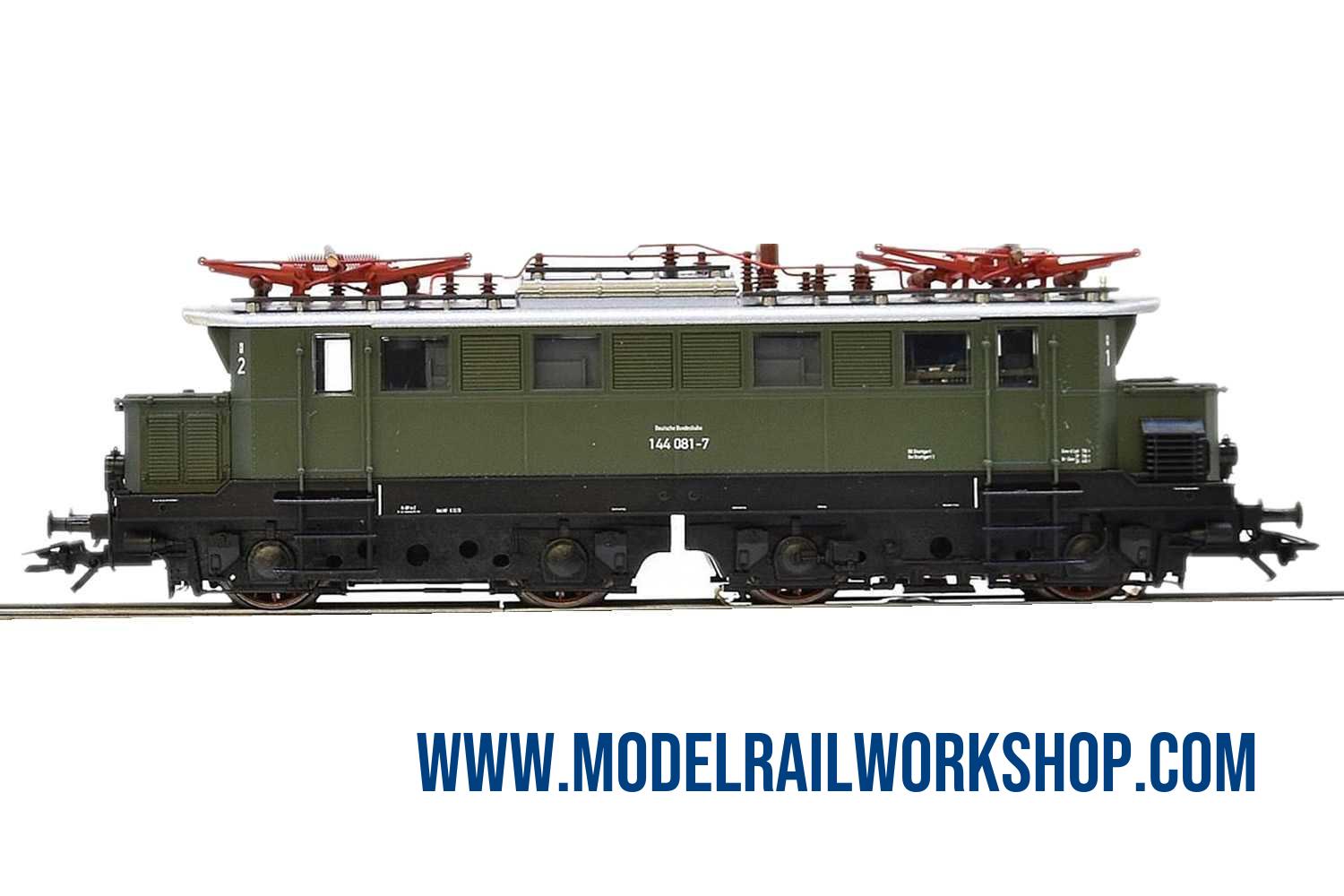| Electric Locomotive.
German Federal Railroad (DB) class 144 general-purpose locomotive. Older design locomotive.
Source: www.maerklin.de
Universal and Reliable. After the great world-wide economic crisis, the German State Railroad resumed electrification of its network. New, powerful locomotives were needed for these routes. The German railroad industry developed innovative concepts and prototypes for modern, general-purpose locomotives for this purpose. The design by Siemens in particular stood out as clearly more progressive compared to previous designs that were only further developments of provincial railroad locomotives. The Siemens unit was designed as a lightweight, general-purpose locomotive and had a welded frame that rode on two two-axle trucks with integrated buffer beams. Four traction motors suspended from the axles provided the drive mechanism. This meant that this compact locomotive with no pilot trucks could bring its full 78 metric tons of service weight to bear as adhesion weight on the driving wheels without reaching the critical axle load of 20 metric tons. These modern motors reached 2,200 kilowatts / 2,949 horsepower that could be used directly at the axles without expensive drive mechanisms. This locomotive could reach 90 km/h / 56 mph. The 178 locomotives purchased by the German State Railroad from 1932 to 1945 as the E 44 were followed by another 7 units on the German Federal Railroad. These units all turned in such good results that they were kept in regular service well into the 1980s and were considered almost indestructible. |
